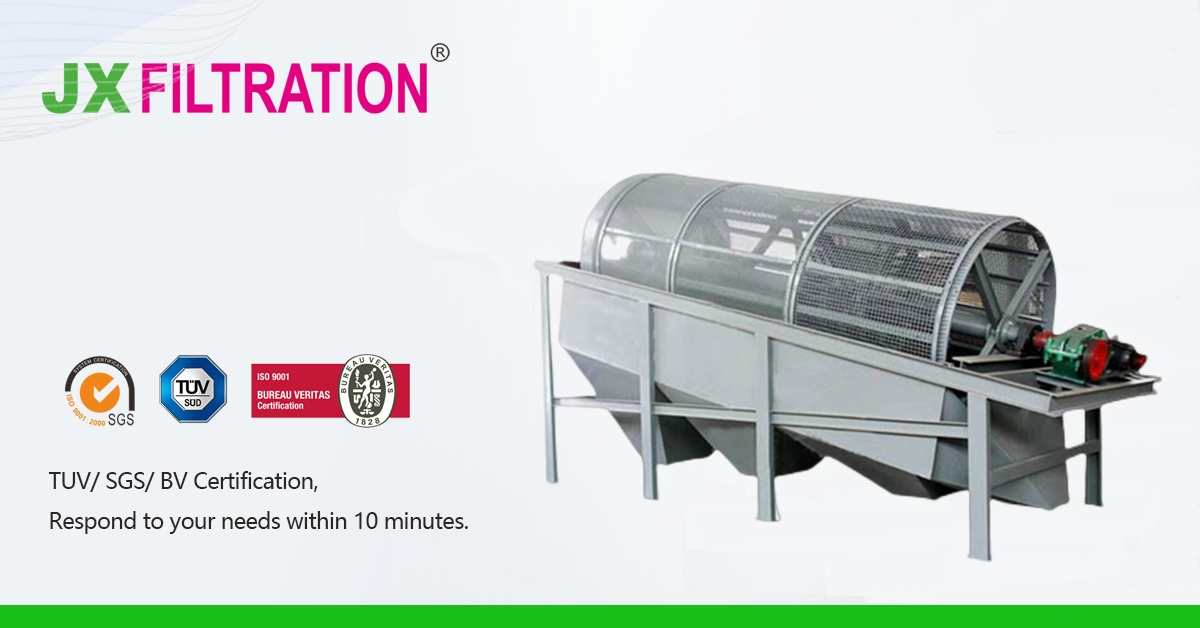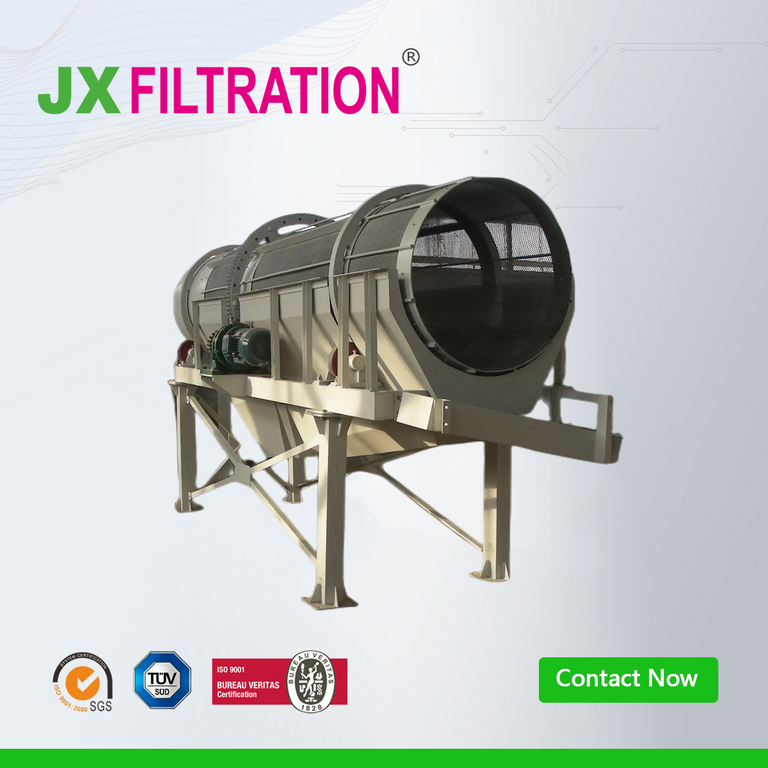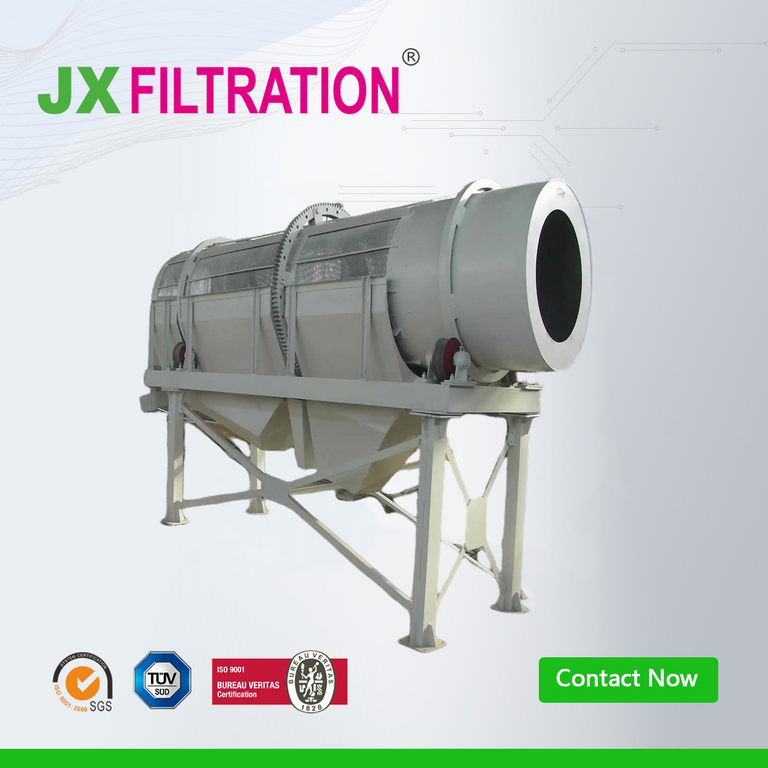Advantages of Trommel Screen
In the design of a circulating water system, the removal of suspended particulate matter is a crucial aspect. The Trommel Screen operates on the principle of mechanical filtration using a micro-perforated screen to intercept and remove the majority of visible small particles in the effluent, reducing the organic load for subsequent treatment units. The device commonly used in the microfiltration stage is the Trommel Screen, also known as a rotary drum microfilter.
Apart from the Trommel Screen, another design known as the Sieve Bend Screen can also effectively remove solid particles from water. This screen utilizes a curved fixed screen surface arranged vertically to the direction of the incoming water flow to achieve solid-liquid separation in the water. The advantage of this design lies in its independence from additional mechanical power, making it energy-efficient without requiring electricity. So, why isn't the Sieve Bend Screen used in the filtration of circulating water systems?

-
The Sieve Bend Screen requires manual brushing of the screen surface every hour when the aquaculture load is high, which is time-consuming and labor-intensive.
-
The efficiency of the Sieve Bend Screen in removing suspended solids is relatively low, making it unsuitable for high-density and large-volume filtration requirements.
The Trommel Screen is currently a specialized equipment for removing suspended particulate matter. The mesh size directly affects the efficiency of suspended particle removal, backwash frequency, water consumption, and power consumption. How do you choose the right microfiltration machine?
-
Mesh size: To achieve better economic results in terms of removal efficiency, water consumption, and energy consumption, a mesh size of 200 is recommended. Beyond 200 mesh, water and power consumption will increase rapidly.
-
Water-driven transmission: Water-driven transmission should be the preferred choice for the microfiltration machine's drive unit, significantly reducing transmission power consumption and saving electricity—two benefits in one.
-
Rotation speed design: The rotation speed of the microfiltration machine should be 1-3 revolutions per minute. Excessive rotation speed may cause large particles to break into tiny particles and pass through the filter, reducing the filtration effectiveness.
-
Rinse nozzles: The use of a straight-line backwash nozzle provides higher backwash intensity compared to traditional conical nozzles, saving water and electricity by 20-30%.
Any Requirements, Contact Us Now!
Kris
Email/Teams: kris@filtrationchina.com
Mobile/Whatsapp/Wechat: +86 18980776200


